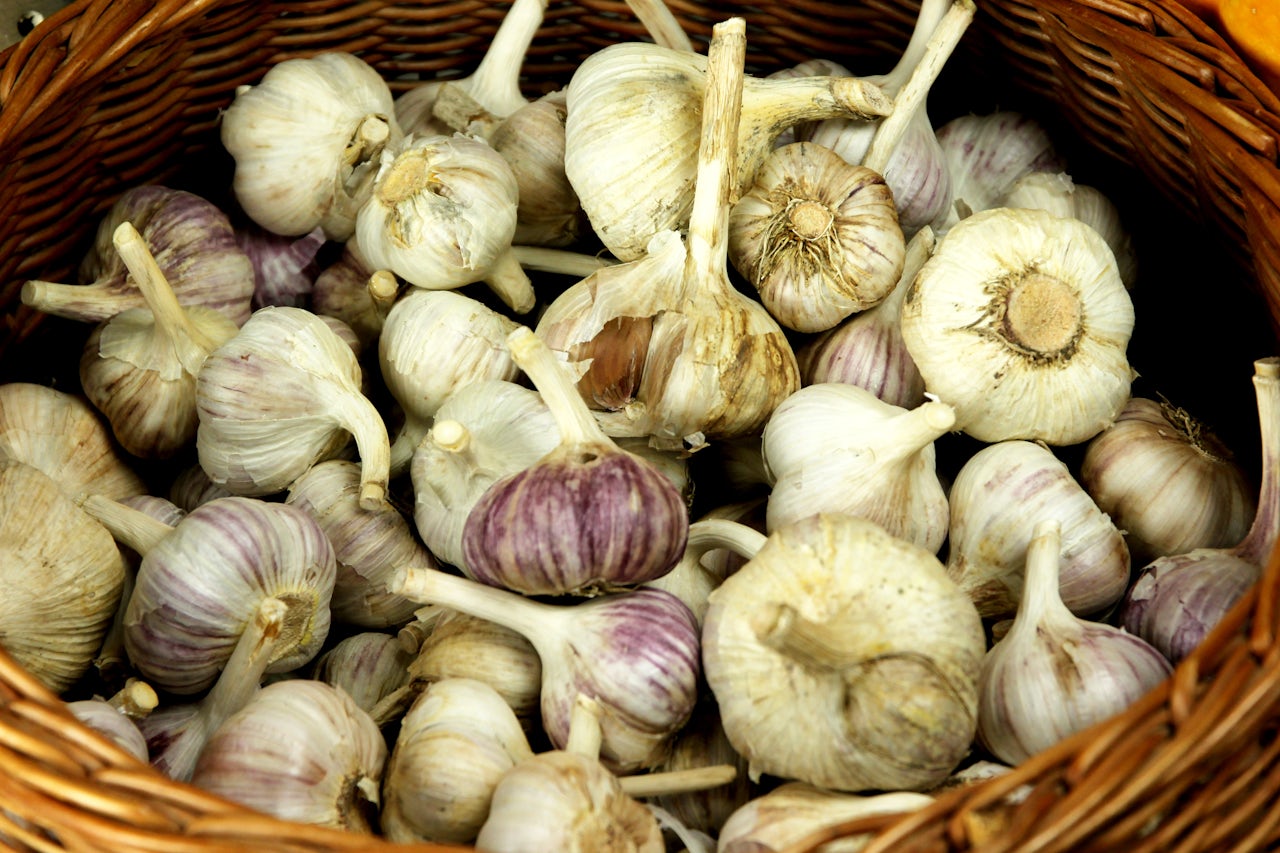Welcome to a new column called I’m Upset, in which Outline Executive Editor Leah Finnegan and others talk about something that is making them upset.
Food writing has always been something that has made me upset in that it is fertile ground for writers who like to use unnecessarily evocative language like they’re MFA students competing for the Adjective Pulitzer. Why are food writers always “tucking into” things? Why can’t you just “take a bite” like a normal person? Or “chomp down,” if you want to be funny? Chomp chomp.
Grub Street and other outlets have tirelessly chronicled some of the worst food-writing cliches — the pretentious “pillowy,” “savor,” “sourced”; the infantile “yummy” and “nom.” Here I would like to talk about a word that has recently become offensively prominent: “garlicky.”
Sometime in the last year or two, the word “garlicky” has taken up residence on websites and social feeds including but not limited to BonAppetit.com. According to BonAppetit.com, an enterprising home cook can tuck into recipes for Garlicky Panko Toasties, Za’atar Chicken with Garlicky Yogurt, and even Garlicky, Herby Chicken.
Garlicky embodies the most lazy adjective trope. “Yeah, let’s just stick a ‘y’ at the end of a noun to make it an adjective, there we go, I’m so casual, my food is casual, buy my book.” Why make something seem like it is a certain way if it is, in fact, inherently that way? Is there, or is there not, garlic in the dish?
The term seems to recently have been popularized for the mainstream yuppie crowd in part by food writer Alison Roman, who has provided the public with recipes for Crispy Chickpeas and Lamb with Greens and Garlicky Yogurt, Smashed Cucumbers and Scallions and Garlicky Yogurt, Grilled Squid with Spicy, Garlicky White Beans and Vinegared Tomatoes, Sheet-Pan Trout with Garlicky Broccolini, and Garlicky Chicken Thighs with Scallion and Lime. (I would like to disclose here that I purchased Alison Roman’s cookbook, Dining In, for my mother last year, and I have also eaten several dishes cooked from it, some of which contained garlic but I would not describe as “garlicky.” Regardless, they were very good.)
BonAppetit.com and Roman are not the only offenders here — Martha Stewart offers Garlicky Roasted Asparagus, there’s Garlicky Roasted Broccoli at thekitchn.com, and way back in 2008 the food blog 101 Cookbooks talked about Garlicky Greens: “...I've never posted a simple, tasty, everyday sauteed greens recipe here. I'm not exactly sure how this omission happened, but it did. So here it is, a quick, extra-garlicky kale, chard, or spinach recipe — your choice.” Your choice — but the choice must be garlicky.
Garlicky has unfortunately become an epidemic, the -y suffix infecting nouns in other recipes. A recent post on Healthyish, BonAppetit.com’s blog for healthyish recipes, begins: “When I think of meatballs, I think of cold winter nights and roasting pans. I think of spaghetti. Or lamb and raisin-y pesto, chicken with salty feta, or hoisin-laced turkey.”
RAISIN-Y!!! Raisin-y???? This is madness!
Listen, I get it. Food writers are in a tough spot, having to eat and then describe food. But there is an immutable truth that is perhaps inherent to the profession, much like garlic is inherent to a dish of Garlicky Greens. As an anonymous food-writing editor told me, “The act of articulating what something tastes like in great detail makes you an asshole from the start because who has the time and palate to do that EXCEPT an asshole.”
I will close this blog post with a message to food writers conveyed by the poster of a 2002 movie starring Jennifer Lopez:
Are you upset about something? Email leah@theoutline.com to discuss.

